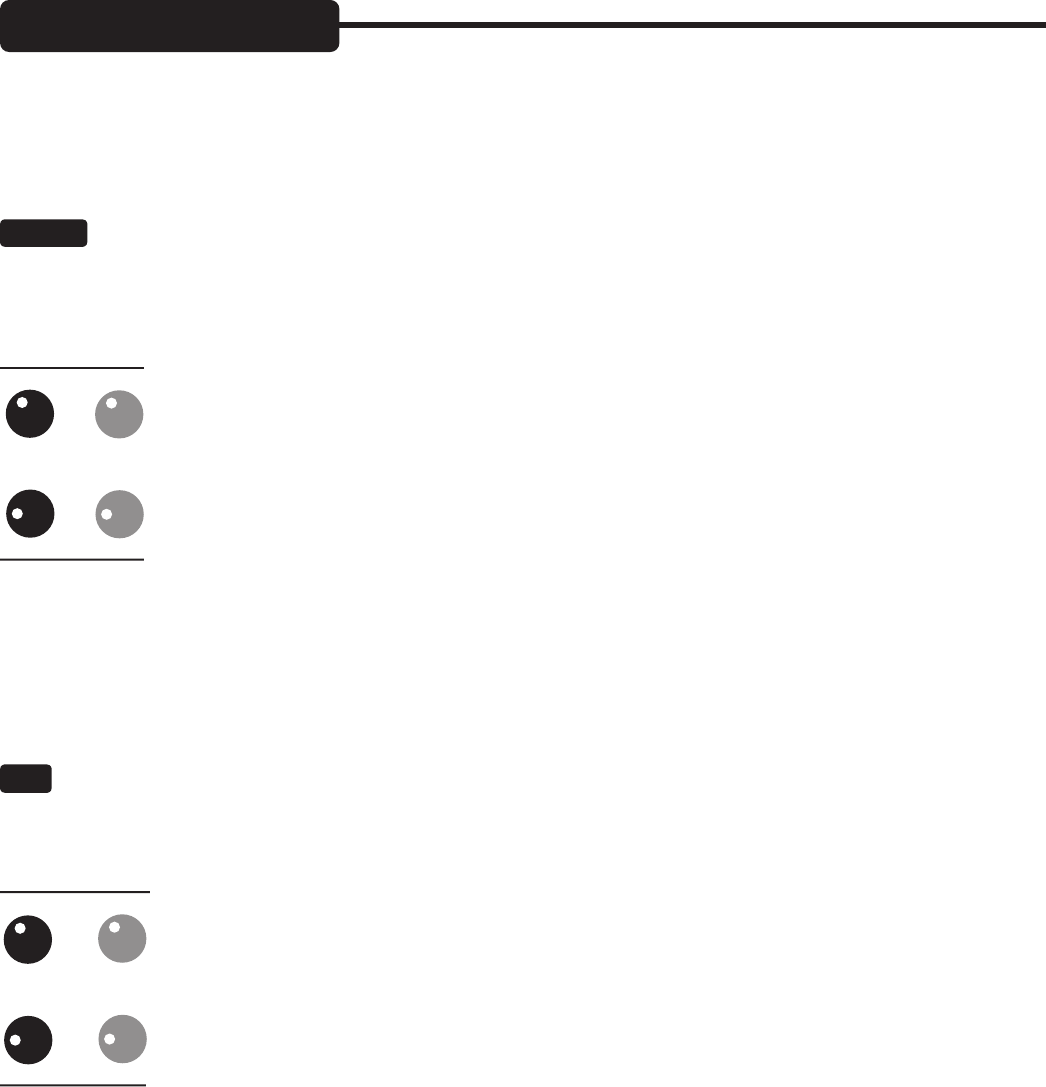
2.) GAIN - In conjunction with the Tone Controls -
Basically, a simple rule applies...as the Gain is increased the Tone control string
has less and less effect on the signal until at 5:00 the signal is so saturated that you are
getting mostly Gain and very little Tone
this is the reason we suggest using the
Control in its middle region. Here the Tone control string is very active and provides
maximum shaping power - allowing you to dial virtually any sound you desire.
TREBLE:
As in most tube guitar amplifi ers, the
Control ( in both channels of your
of the rotary controls and is next in line only to the GAIN Control as a shaping tool. Because it is fi rst in the signal path of the tone
controls - and from here the Middle and Bass receive their signal - it is by far the dominant tone control. For this reason the setting of
Control is very important for equal representation of the three frequency regions to appear at their respective controls.
Like most of the controls on your
there is an optimum region of the
Control where ample top end is mixed in
and yet enough signal is still passed on to the MIDDLE and BASS Controls.
Between 11:00 and 1:30 is where you’ll fi nd the sweet spot .
There are defi nitely great sounds above and
below this middle region, but the balance between the
Control and the other two tone controls is
The one place you may want to throw caution to the wind and set the
Control above this median
zone presents itself in Channel 1 of your new
. In both modes ( Clean & Pushed ), the
Control can be used to dump extra gain into the mix. This is especially effective in the PUSHED mode for
crunch sounds. When doing so use the PRESENCE Control to roll off some of the more than ample top end
for a more compressed feel and fatter voice. As you might surmise, the BASS Controls’ effectiveness will be reduced, so you may
have to run a much higher setting than you are used to seeing to achieve a balance. This said, keep in mind that the
in Channel 1 Pushed should not be set much above 2:30 to avoid unwanted microphonic tube problems.
MID:
Control is responsible for the blend of midrange frequencies in the mix and though its effect is not as dramatic as
that of the TREBLE Control, it plays an integral part in achieving any sound in your
. It is capable of changing the feel
dramatically as it blends in a group of frequencies that tend to soften or stiffen the way a sound feels to play.
Most players tend to lean in the direction of lower
Control settings ( 7:00 - 11:00 ) where a scoop in
( by letting the Bass become a little more dominant ) and a lack of punch lends a
feel to the strings and therefore less apparent resistance to the pick. As the
even feel to the strings and therefore less apparent resistance to the pick. As the even
Control is increased, ( 11:30 - 1:30 ) the sound is rounded-out and fi lled-in with a focused mid attack appear-
ing rather quickly. As you would guess, the feel starts to change - becoming more resistant. Above this region
Control could be used to compensate for either weaker pick-ups or for times when a specifi c
defi ciency is produced by either an extremely high setting of other tone controls, or a physical anomaly in the
Control settings ( 2:00 - 5:00 ) can introduce added gain and create enhanced
focus, the trade-off will be a stiffer, more forward, less compressed feel.
Channel 1 utilizes a different MIDDLE Control than that of the Channel 2
with a custom-designed taper and value. In its low range
( below 12:00 ) it functions as a normal midrange control with a taper suited to blending fi ne increments of these frequencies. Most
players lean toward a fairly radical scoop ( 7:00 - 10:30 ) for clean playing, preferring to let Treble and Bass remain dominant, thus
producing the signature sparkle and breath essential for a pristine clean sound.
